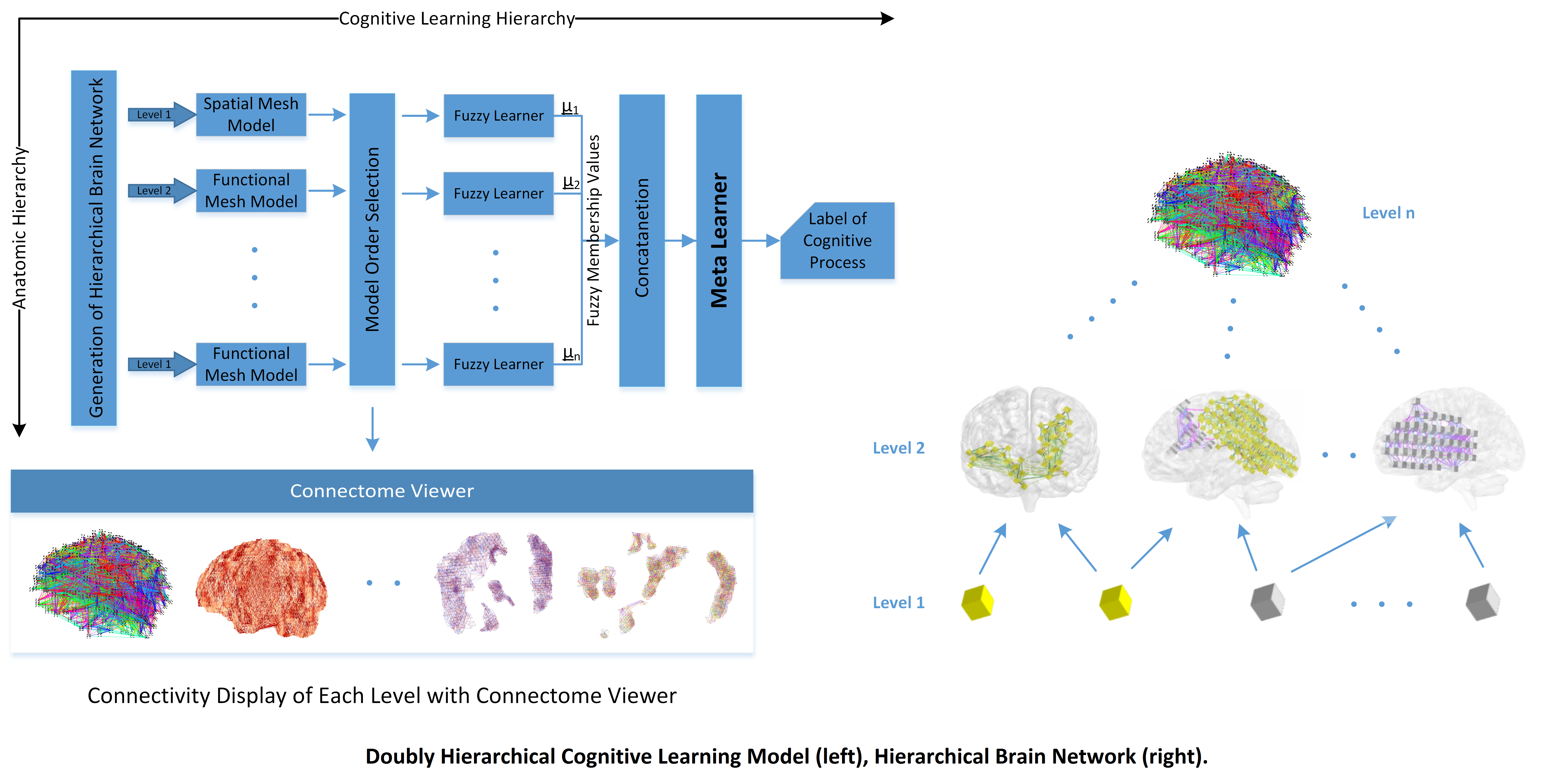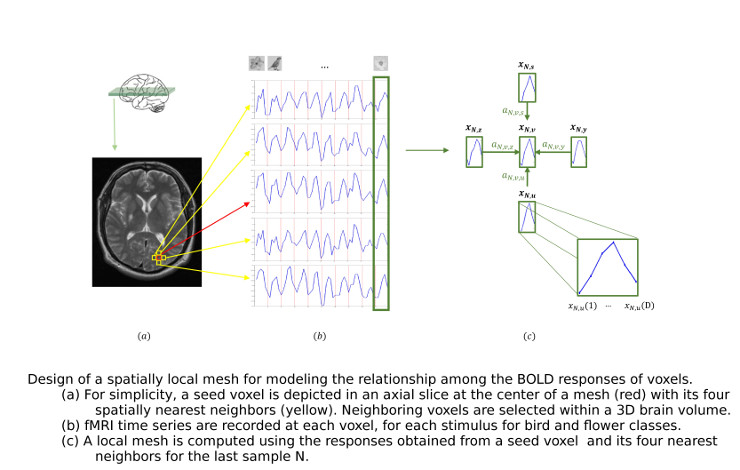Projects
- Tubitak Project 114E045, "Multi-layered Cognitive Learning Model"
- Tubitak Project 112E315, "Local Voxel Networks for Modeling and Classification of Brain Activity During Cognitive Processing, Using Brain Signals"
- Google Research Award, "Sentiment Classification Using Multimodal Data", 2011-2012.
- Distributed and parallel processing of data,
- Self-organizing and dynamic optimization of the models and
- Goal oriented adaptive fusion of data.
- Experimentation and Data Collection,
- Feature Fusion,
- Information Extraction Fusion and
- Decision Fusion
Researchers in Computer Science discipline put a great effort for developing machine
intelligence techniques, inspired from human intelligence and cultivate elegant mathematical
tools to design intelligent machines. In this project, we use these tools to develop a
mathematical model for human cognitive processes.
 In this project, the previously developed single layer mesh model is extended into a doubly
hierarchical computational brain model. The first type of hierarchy is represented by 3-level
brain tree, where the nodes correspond to "homogenous" brain regions, for each information
type. The second hierarchy models the classes at each level of the brain network,
separately, then, ensembles the learners of all levels.
In this project, the previously developed single layer mesh model is extended into a doubly
hierarchical computational brain model. The first type of hierarchy is represented by 3-level
brain tree, where the nodes correspond to "homogenous" brain regions, for each information
type. The second hierarchy models the classes at each level of the brain network,
separately, then, ensembles the learners of all levels.
This project is currently supported by Tübitak
In this project, we modeled the cognitive states, e.g. memory, learning, emotion, using
methods developed for intelligence systems. In other words, we employed the models in
artificial intelligence, which are developed by imitating the human intelligence, to model the
human brain itself. The proposed models are based on the functional magnetic resonance
imaging data (fMRG) recorded during different cognitive processes. In order to gather these
data, we have also designed cognitive experiments and applied them on participants.
Therefore, we have used the labeled dataset to train machine learning algorithms suggested
in the project.
 Our proposed model, called "Local Mesh Model" method assumes a linear interactions between the local voxels,
which are the smallest unit of fMRG signals. It is known that, locally close voxels have similar
time series for the same types of stimuli. The local similarity indicates a linear relation between
nearby voxels. It is also known that, some voxels in the brain have similar activation patterns
with distant voxels due to the direct links between some groups of neurons. These voxels can
be accepted as functional neighbours. We define a new neighborhood system, called
functional neighborhood and define functional meshes to model the linear interactions among
the voxels in the same functional neighborhood. Experimental results obtained for "Local
Mesh Model" established in functional neighborhood is more successful than raw fMRI
intensity values to label cognitive states.
Our proposed model, called "Local Mesh Model" method assumes a linear interactions between the local voxels,
which are the smallest unit of fMRG signals. It is known that, locally close voxels have similar
time series for the same types of stimuli. The local similarity indicates a linear relation between
nearby voxels. It is also known that, some voxels in the brain have similar activation patterns
with distant voxels due to the direct links between some groups of neurons. These voxels can
be accepted as functional neighbours. We define a new neighborhood system, called
functional neighborhood and define functional meshes to model the linear interactions among
the voxels in the same functional neighborhood. Experimental results obtained for "Local
Mesh Model" established in functional neighborhood is more successful than raw fMRI
intensity values to label cognitive states.
This project is currently supported by Tübitak
In this study, we deal with several challenges in the sentiment classification problem such as; developing an efficient multi-model learning algorithm, processing the online data and the computational complexity of the develloped algorithms. For this purpose, we propose a hybrid model, which uses information fusion techniques for the combination of the fMRI, text and face expression data. The ensemble learning architectures are usefull tools for this purpose also and fMRI data will be employed in the design phase of the algorithm, to optimize the correlation parameters between the query text and facial expression data, received from the webcams.
Our proposed architecture enables;

This 4-layered information fusion framework includes (see figure below);
